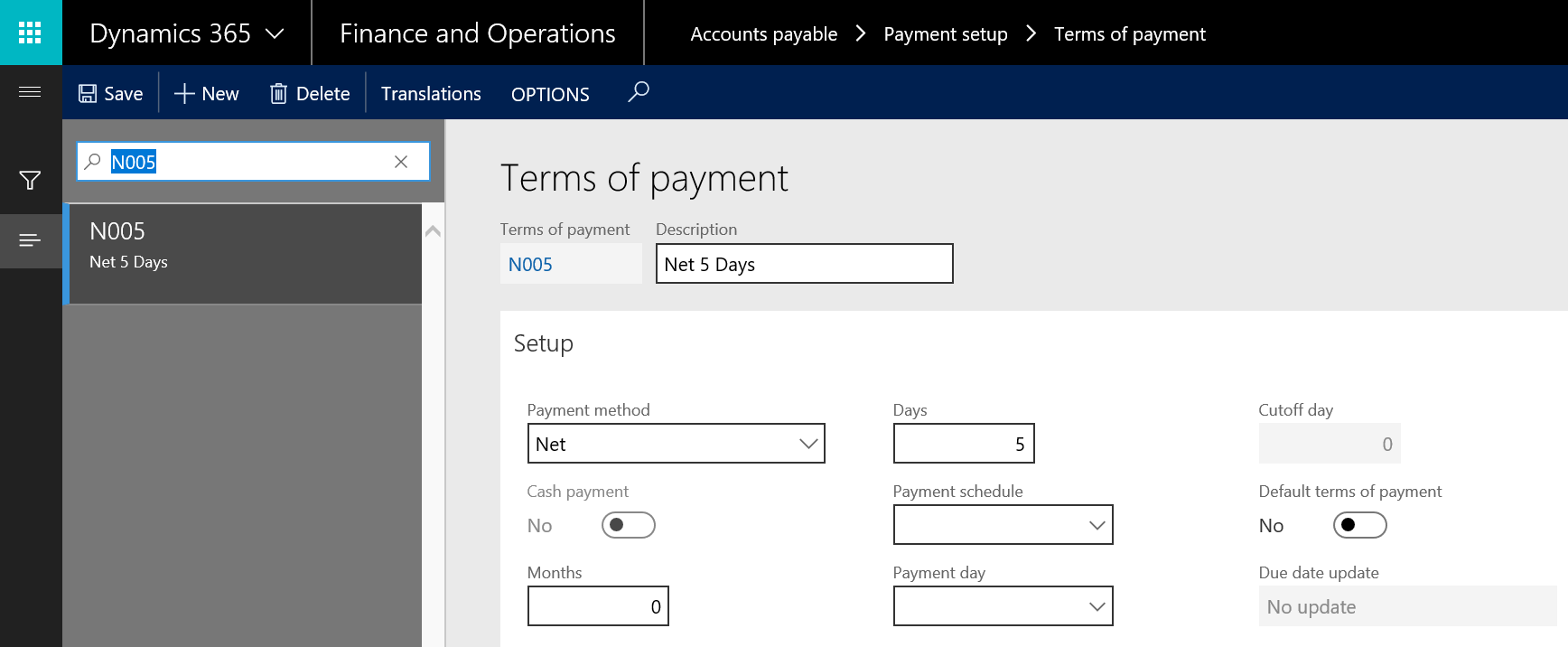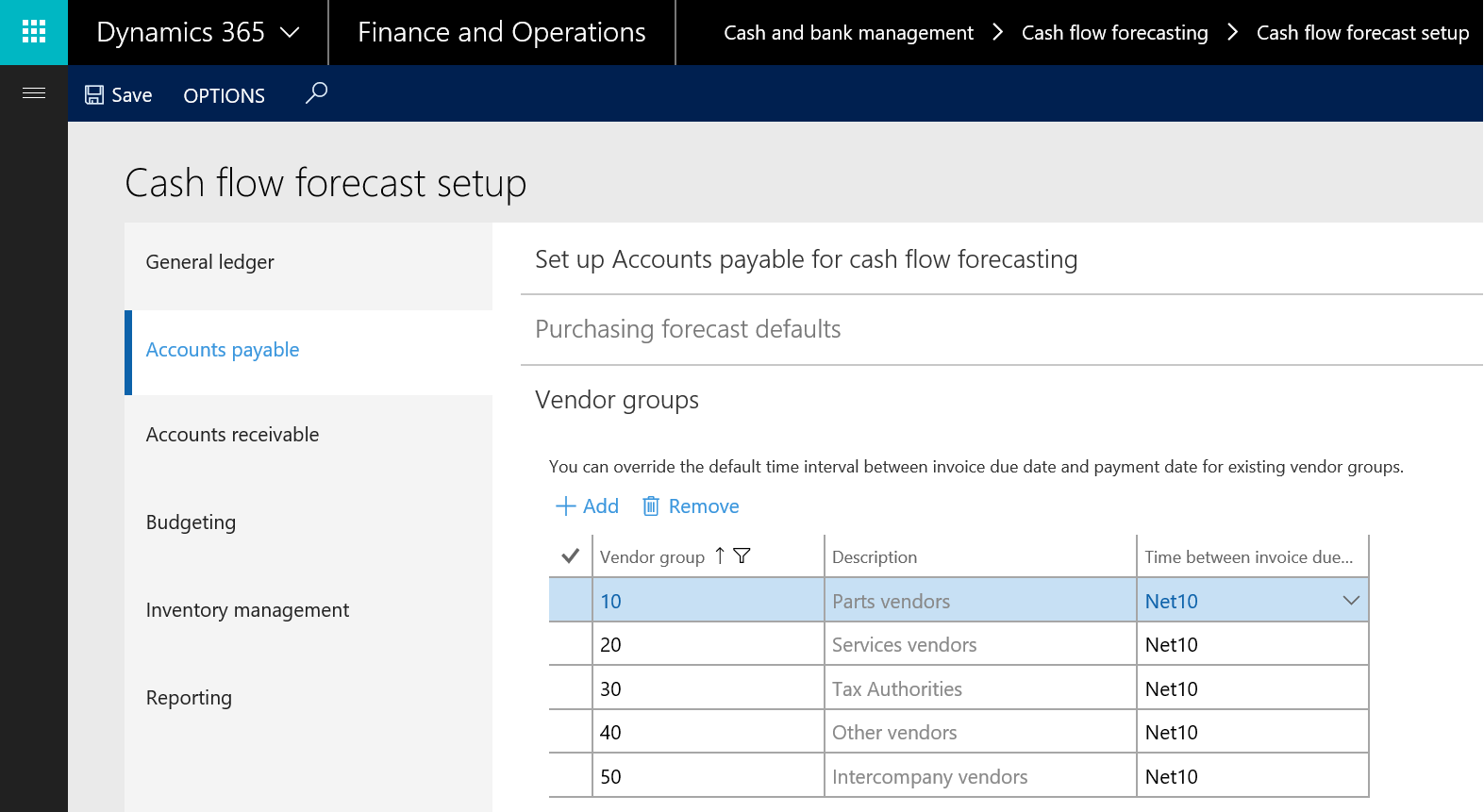The accounts payable module is further subdivided as follows:
- Parameters: This identifies the company-wide parameters for accounts payable. For the parameters of accounts payable, navigate to Cash and bank management | Cash flow forecasting | Cash flow forecast setup. Now, go to Accounts payable and click on Purchasing forecast defaults, as shown in the following screenshot:

Also, you can navigate to Accounts payable | Setup | Accounts payable parameters | Ledger and sales tax then move to the Cash flow forecast fast tab.
- Time between delivery and invoice date: This identifies the period between the product's receipt and invoice.
- Terms of payment: This identifies the period between the vendor invoice posting and the due date.
- Liquidity account for payments: This represents the liquidity account.
- Percentage of amount to allocate to cash flow forecast: This represents the allocation key used for budget reduction, with regard to purchase level.
- Time between invoice due date and payment date: This identifies the period between the vendor payment due date and the date of payment execution. The terms of payment values are commonly used in the accounts payable's cash flow forecast, where we can set the number of days or months that identify the payment due date. To see the accounts payable's terms of payment, navigate to Accounts payable | Payment setup | Terms of payment, as shown in the following screenshot:

- Vendor posting profiles: This is an integration point between the accounts payable sub ledger and general ledger, where identifying a particular ledger account will be used while posting a transaction for a specific vendor. The Settle account column in the following screenshot represents the liquidity accounts that are used for vendor payments. For the accounts payable posting profiles, navigate to Cash and bank management | Cash flow forecasting | Cash flow forecast setup. Then move to the Vendor posting profiles fast tab. The following screenshot displays the Vendor posting profiles page in detail:

The Liquidity account for payments column in the Vendor posting profile overrides the Liquidity account column under Module parameters.
- Vendor groups: This represents the vendor's classification and the posting profile assigned to a specific vendor group in order to identify the Time between invoice due date and payment date column that is used in cash flow management logic. To see the accounts payable vendor groups profile, navigate to Cash and bank management | Cash flow forecasting | Cash flow forecast setup. The following screenshot shows the Vendor groups screen as an example:

The Settle period time between invoice due date and payment date column in Vendor groups overrides the Time between invoice due date and payment date settle period column under Module parameters.
- Vendor master: In the Vendor master data information, which is captured and recorded during the creation of vendors and has an effect on the vendor's aging and the cash flow forecast as well, the terms of payment under the payment section is considered as a default value. It is proposed when the vendor is selected in transaction, and can be changed on a transactional level, without modifying the master data record. For the accounts payable vendor master data, navigate to Accounts payable | Vendors | All vendors, then click Edit on a particular vendor and go to the PAYMENT fast tab:
